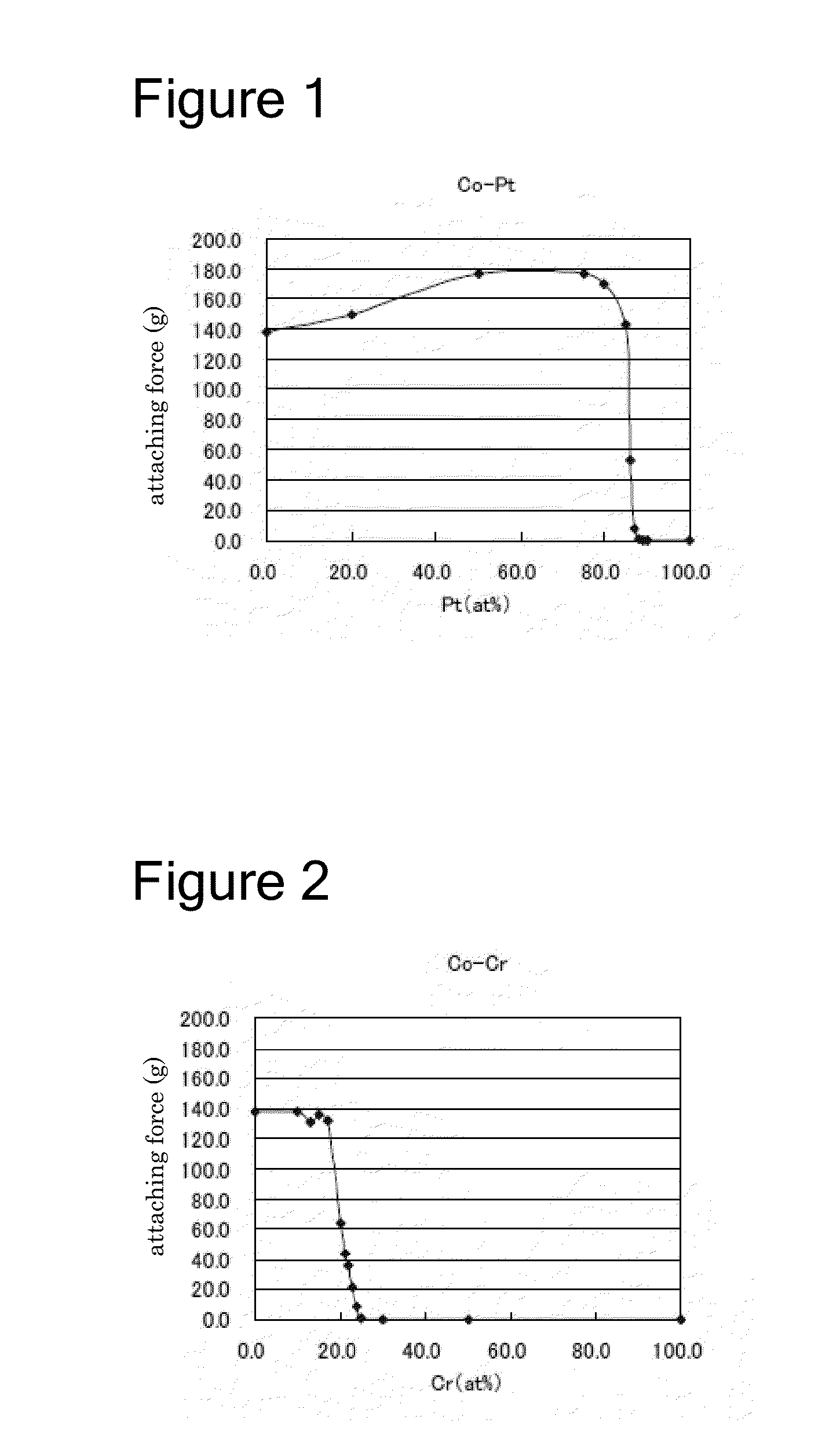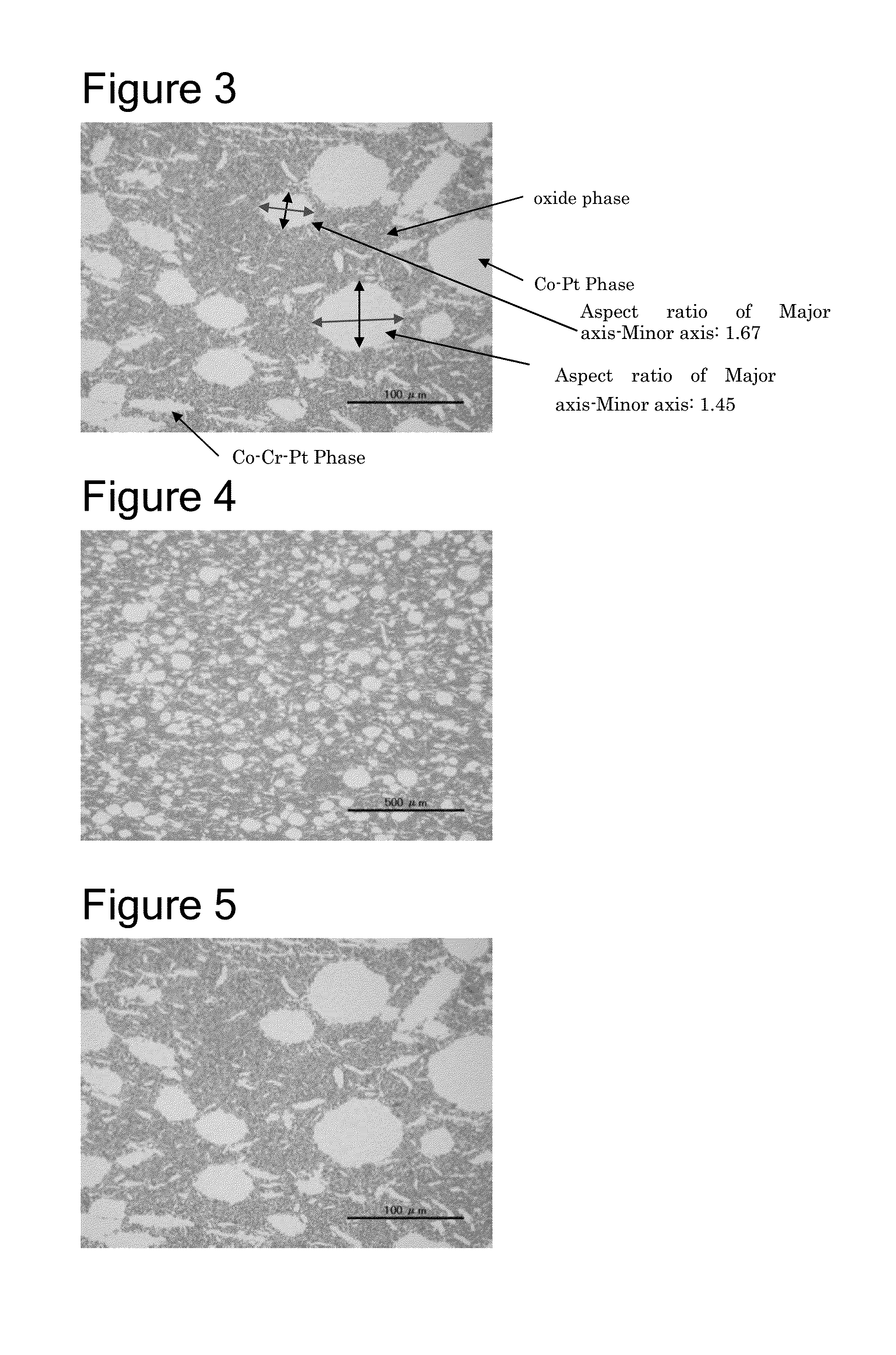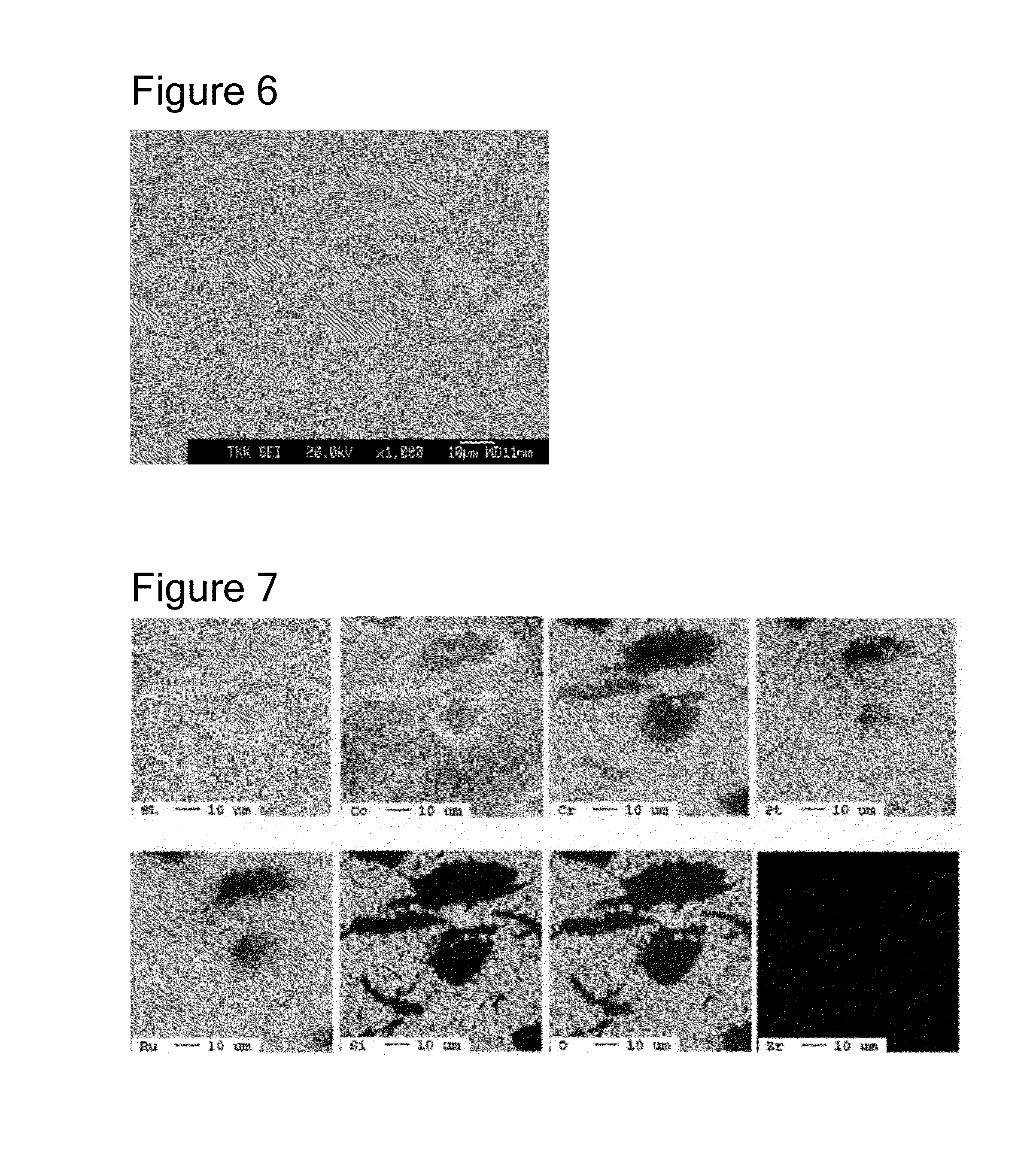Target for magnetron sputtering
a magnetron sputtering and target technology, applied in the direction of electrical apparatus, basic electric elements, metal material coating process, etc., can solve the problems of inefficiency of sputtering, achieve stable voltage, no risk of composition change, and high pass-through-flux
- Summary
- Abstract
- Description
- Claims
- Application Information
AI Technical Summary
Benefits of technology
Problems solved by technology
Method used
Image
Examples
example 1
[0068]The composition of the entire target prepared as Example 1 was 90 (71 Co-10 Cr-14 Pt-5 Ru)-7 SiO2-3 Cr2O3. The compositional ratios of elements below all take the unit of atomic %.
[0069]The metals were measured off so that the alloy composition amounts to 46.829 Co-20.072 Cr-23.063 Pt-10.036 Ru (the proportion of Co and Cr are 70 atomic % of Co and 30 atomic % of Cr), and the alloy was heated to 1550° C. to melt the metals and form molten metal, to prepare a Co—Cr—Pt—Ru powder by gas atomization at a spraying temperature of 1750° C.
[0070]Then, the metals were measured off to form an alloy composition of 95 Co-5 Pt, the alloy was heated to 1500° C. to melt the metals and form molten metal to prepare a Co—Pt powder by gas atomization at a spraying temperature of 1700° C.
[0071]The two types of atomized powders prepared above were classified by sieves to obtain a Co—Cr—Pt—Ru powder of a particle size of 10 μm to 100 μm and a Co—Pt powder of a particle size of 10 μm to 100 μm.
[0072...
example 2
[0110]The rate of Pt in the Co—Pt phase was altered in the range of 4 atomic % to 10 atomic %, and (2) the rate of Cr (Cr / (Cr+Co)) in the Co—Cr—Pt phase was altered in the range of 30 atomic % to 95 atomic % of Cr, and SiO2, TiO2 and Co3O4 were used as oxides to manufacture the sintered object (Co—Cr—Pt—Ru—SiO2—TiO2—Co3O4) by a similar process as Example 1 to assess the pass-through-flux (PTF). The content ratio (volume %) of the materials of each sintered object and the pass-through-flux (PTF) are shown in Table 3.
TABLE 3First Powder MixtureCo—PtFirst PowderCo—PtCo—Cr—Pt phase (vol %)Oxide phase (vol %)phaseMixtureMixtureNo.Or / (Oo + Or)CoCrPtRuSiO2TiO2Co3O4SUMPt (at %)(vol %)(vol %)PTF (%)13028.11%13.10%15.50%7.40%11.05%8.04%16.81%100.00%477.55%22.45%59.623028.23%13.15%15.15%7.43%11.09%8.07%16.88%100.00%576.98%23.02%60.133028.35%13.21%14.79%7.46%11.14%8.10%16.95%100.00%676.40%23.60%60.643028.47%13.27%14.42%7.49%11.19%8.14%17.02%100.00%775.80%24.20%61.053028.60%13.32%14.04%7.53%11.2...
PUM
| Property | Measurement | Unit |
|---|---|---|
| Percent by atom | aaaaa | aaaaa |
| Percent by atom | aaaaa | aaaaa |
| Percent by atom | aaaaa | aaaaa |
Abstract
Description
Claims
Application Information
 Login to View More
Login to View More - R&D
- Intellectual Property
- Life Sciences
- Materials
- Tech Scout
- Unparalleled Data Quality
- Higher Quality Content
- 60% Fewer Hallucinations
Browse by: Latest US Patents, China's latest patents, Technical Efficacy Thesaurus, Application Domain, Technology Topic, Popular Technical Reports.
© 2025 PatSnap. All rights reserved.Legal|Privacy policy|Modern Slavery Act Transparency Statement|Sitemap|About US| Contact US: help@patsnap.com



